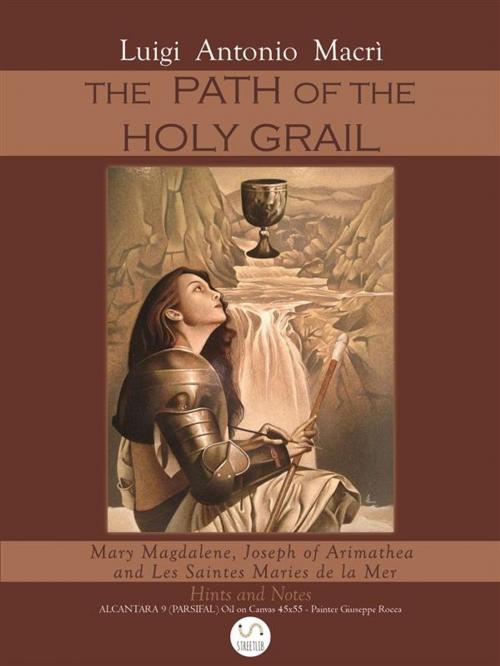The Path of the Holy Graal
Mary Magdalene, Joseph of Arimathea and Les Saintes Maries de la Mer
Nonfiction, History, Ancient History, Biography & Memoir, Historical| Author: | Luigi Antonio Macri' | ISBN: | 9788826401836 |
| Publisher: | Luigi Antonio Macri' | Publication: | September 14, 2017 |
| Imprint: | Language: | English |
| Author: | Luigi Antonio Macri' |
| ISBN: | 9788826401836 |
| Publisher: | Luigi Antonio Macri' |
| Publication: | September 14, 2017 |
| Imprint: | |
| Language: | English |
This book doesn’t so much want to add itself to the long bibliography which already exists on the subject as to examine one particular element, already present in the literary tradition of the Grail: the arrival of the Saint Marys in the south of France and the subsequent journey of Joseph of Arimathea to Glastonbury, in Wales, Great Britain.
My intention is to focus, from among the many thematics of the Grail, mainly on the “path of the Holy Grail”, that is to say on the journey of the St. Marys from Palestine to their arrival in Provence, in the south of France, as recounted by Jacopo da Varazze, or by Varagine, (1228-1298) and earlier still by Rabano Mauro (776-856). Joseph of Arimathea is also mentioned as being part of the group who, departing from the south of France, establishes the first church in Great Britain, on Glastonbury Plain, another extraordinary place with very strong ties to the Grail and the Arthurian cycle. But who is really Joseph of Arimathea, or rather Joseph the Just or Joseph Ha-Rama-Theo?! what was the role of Joseph of Arimathea? What was the relationship between Lazarus, Mary Magdalene and Joseph of Arimathea? And the role of Martha? Where did the “Legend” of this journey from Palestine to the South of France originate and how was it elaborated? Why did Joseph of Arimathea take the Grail to Glastonbury, in Great Britain? Of course, we haven’t all the answers, but starting from the questions is also important to try to understand something.
Some of the main characters, like Mary Magdalene and Joseph of Arimathea, have been represented in a comparative way that involve the canonic and apocryphal gospels and some codes and documents found in Qumran.
This book doesn’t so much want to add itself to the long bibliography which already exists on the subject as to examine one particular element, already present in the literary tradition of the Grail: the arrival of the Saint Marys in the south of France and the subsequent journey of Joseph of Arimathea to Glastonbury, in Wales, Great Britain.
My intention is to focus, from among the many thematics of the Grail, mainly on the “path of the Holy Grail”, that is to say on the journey of the St. Marys from Palestine to their arrival in Provence, in the south of France, as recounted by Jacopo da Varazze, or by Varagine, (1228-1298) and earlier still by Rabano Mauro (776-856). Joseph of Arimathea is also mentioned as being part of the group who, departing from the south of France, establishes the first church in Great Britain, on Glastonbury Plain, another extraordinary place with very strong ties to the Grail and the Arthurian cycle. But who is really Joseph of Arimathea, or rather Joseph the Just or Joseph Ha-Rama-Theo?! what was the role of Joseph of Arimathea? What was the relationship between Lazarus, Mary Magdalene and Joseph of Arimathea? And the role of Martha? Where did the “Legend” of this journey from Palestine to the South of France originate and how was it elaborated? Why did Joseph of Arimathea take the Grail to Glastonbury, in Great Britain? Of course, we haven’t all the answers, but starting from the questions is also important to try to understand something.
Some of the main characters, like Mary Magdalene and Joseph of Arimathea, have been represented in a comparative way that involve the canonic and apocryphal gospels and some codes and documents found in Qumran.















